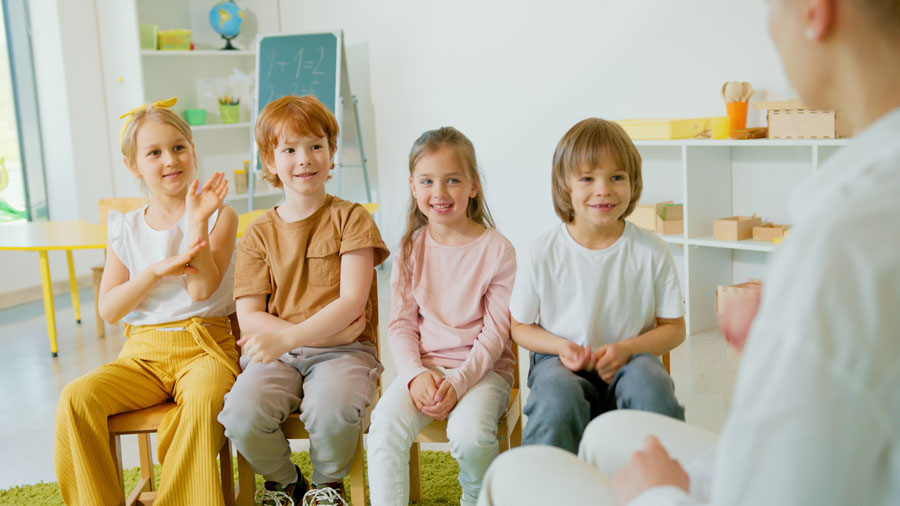Much has been written about goal setting. Goals drive much of what we do, from planning our retirement to changing our eating habits or simply completing everyday tasks. Each year, teachers feel the pressure to choose professional goals that may link to their yearly evaluations. Educators understand the importance of student learning goals, and education academic John Hattie’s research shows learning is improved when students set their own goals for the experience. The same is also true with teachers! So, how do we set student-centered goals that will increase student achievement and, at the same time, increase our professional skills?
First, decide on an area of growth for you. When thinking about growth opportunities, keep your focus on areas that affect student achievement and will have a direct impact on them. Some examples include developing a system for students to track their learning, engaging students in discussions during whole group reading, or ensuring students follow the rules or procedures during a specific time. All of these are specific and can have a direct impact on student learning. They could also be measured using student data.
Goals to avoid include those that may be too broad or not definable enough for collecting student data, such as being more organized or developing better lessons. While they are items of importance, how would you determine if these goals are being met or accomplished? Statement goals like these are not specific enough.
Second, ensure you can collect student data about the chosen goal, which will determine if the goal is met. For instance, a teacher at an elementary school recognized an important part of the day was reading center time. She also realized this was an area of growth for her. The teacher knew her students enjoyed center time, and she got to work with all her students in a small-group setting, but she wanted to implement centers that would give the students time to practice skills.
In their work on the subject, education researchers and consultants Dr. Robert Marzano and Kelly Harmon state, “Practice is the gradual shaping of a skill, strategy, or process over the course of multiple repetitions to some level of proficiency.”
The teacher in our example knew her center time would give students enough exposure and practice time to master new skills. She developed her goal to specifically look at center time activities giving students more practice time. The time would focus on those skills with which students needed more reteaching and practice time.
The teacher recognized this goal would also align with a required teacher goal, which is part of her formal observation. She realized her center time would give her students opportunities to receive immediate feedback, and developed her goal around the six steps Harmon and Dr. Marzano recommend in their book, Practicing Skills, Strategies, and Processes: Classroom Techniques to Help Students Develop Proficiency:
- Step 1: The teacher models the procedural knowledge.
- Step 2: The teacher guides students as they work to replicate the teacher’s model.
- Step 3: The teacher monitors students and corrects any errors made. They will provide additional opportunities to repeat the execution of the skill in more frequent structured practice sessions.
- Step 4: As students become more proficient, the teacher provides varied opportunities for students to combine discrete skills or strategy steps into more complex processes, such as writing an essay or editing one’s own work
- Step 5: Students engage in independent practice to build fluency for skills that need automaticity, such as skilled reading, or to enhance their controlled processing, which requires students to combine various skills at a more conscious level.
- Step 6: Students reflect on their practice.
These steps can be easily followed, and this particular teacher understood how they would fit during her small-group time.
Third, it is important to predetermine what student data will be monitored to determine if the goal is being met. Remember, the end goal of teaching is for students to increase their learning. The chosen data should show effective teaching increases student achievement. The teacher above decided to gauge the effectiveness of her centers by looking at two data points: one being their grade level common assessments, and with some groups, she would look at DIBELS data. The teacher should let data drive her instruction, and she can work in the areas of greatest need determined by the same data points giving her students more practice time. By doing this, the teacher not only becomes better in a growth area for herself, but her students also become stronger learners.
Lastly, remember that reaching a goal can be difficult and usually requires stepping outside of one’s comfort zone. Usually, our growth areas are in something that may not come naturally to us, or we have not had enough exposure or experience with it. When determining your area of growth, look at your school’s teaching framework or expectations. These may help you determine your goal. Also, make sure it can be attainable. Many places use the SMART goal-setting model, but the specific format isn’t as important as ensuring the goal is measurable, attainable, and timely.
Achieving goals can be very fulfilling professionally and personally—and what better goals to meet as educators than those that also affect student achievement?
References
- Harmon, K., & Marzano, R. J. (2015). Practicing skills, strategies & processes: Classroom techniques to help students develop proficiency. Learning Sciences International.
- Hattie, J. (2019). Visible learning for teachers: Maximizing Impact on learning. Routledge.

